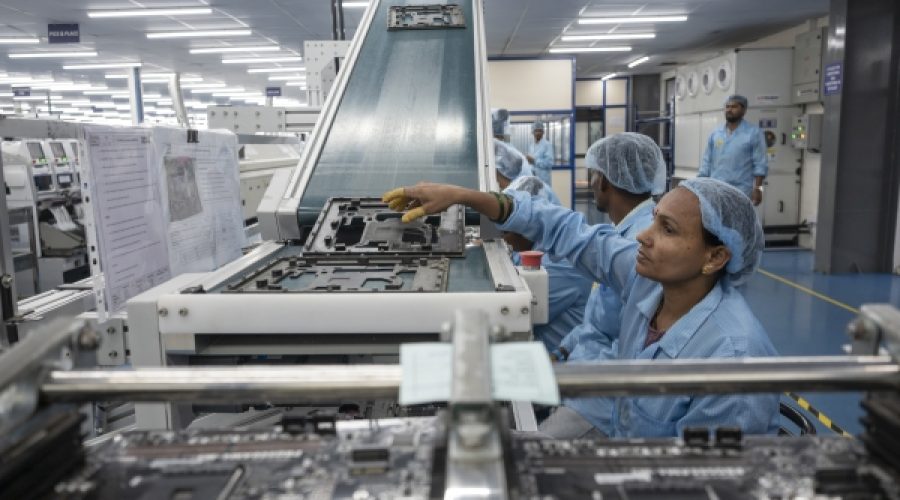Trump’s Onslaught Hits India: What It Means for Investors and Businesses in the Region
NEW DELHI — President Donald Trump’s recent announcement of tariffs affecting half of the world’s countries has sent shockwaves through global trade, leaving many nations scrambling to understand the consequences for their businesses. India, receiving the news a day earlier, faced tariffs of 25% or more on its exports. However, the brief notice provided minimal opportunity for adjustment amid the ensuing uncertainty.
Indian negotiators had not anticipated finalizing a significant trade deal by Trump’s revised deadline of August 1. They had expected to negotiate alongside regional counterparts, continuing discussions until October or November, coinciding with Trump’s planned visit to India as part of the Quad alliance—a strategic group comprising India, the United States, Japan, and Australia, united by shared interests in countering China’s influence.
Instead, India was met with harsh rhetoric and challenging conditions. Along with the steep 25% tariff—the highest rate in Asia, just below the April “Liberation Day” threat—India was criticized for maintaining “strenuous and obnoxious” trade barriers. Additional penalties loom due to India’s purchase of Russian oil, and it was disparagingly labeled a “dead economy.” Meanwhile, Pakistan, India’s regional rival, received praise and was promised an oil exploration agreement.
Beyond the diplomatic strains, the tariff implications remain unclear. Personal electronics and pharmaceuticals rank among India’s largest export categories to the U.S., valued at approximately $14 billion and $10 billion annually, respectively. Industry leaders initially believed smartphones and pharmaceuticals would be exempt from these tariffs. However, a subsequent analysis by the Global Trade Research Initiative in New Delhi suggested otherwise.
The stock markets in India fell for two consecutive days following the announcement. Both domestic and international financial institutions issued warnings predicting a notable slowdown in India’s historically robust economic growth due to these tariffs.
Compounding the uncertainty are additional tariffs announced by Trump. On July 6, he declared an extra 10% tariff on countries aligned with the BRICS group, of which India is a founding member. On July 14, he threatened “secondary tariffs” of 100% on trading partners of Russia if peace was not achieved within 50 days. This prospect has heightened concerns in India, with opposition leader Shashi Tharoor warning such penalties could devastate U.S.-India trade relations.
Evidence suggests Indian refiners had already begun reducing their imports of Russian crude prior to the executive order. Analyst Sumit Ritolia from Kpler noted that Indian refiners were diversifying supply amid mounting apprehension over escalating U.S. sanctions, having used discounted Russian oil to lessen reliance on Persian Gulf imports.
The Trump administration’s objective to reduce the U.S. trade deficit aligns with encouraging India to increase imports of American oil and gas. Last year, India’s exports to the U.S. exceeded imports by $45.7 billion, but India’s oil spending was about three times larger. Redirecting even a portion of this oil procurement to the U.S. could balance bilateral trade.
However, Trump’s aggressive social media attacks have further strained negotiations, eroding trust with Indian Prime Minister Narendra Modi, whom Trump once referred to as a “true friend.” Reports indicate Trump sought a final resolution via phone after four negotiation rounds, while India’s government aimed to avoid unexpected demands.
U.S. Commerce Secretary accused India of “slow-rolling” talks, citing differing negotiation styles. Trump favors swift, top-down decisions, contrasting with India’s steady, bureaucratic pace, particularly regarding politically sensitive agriculture market reforms. India’s recent trade deal with the UK, for instance, required three years of negotiations under two British prime ministers.
In response, India’s Foreign Ministry issued a statement reaffirming the enduring “Comprehensive Global Strategic Partnership” with the U.S., established in 2013, grounded in shared democratic values and robust people-to-people connections. The ministry emphasized resilience through past challenges and expressed confidence that the relationship would continue progressing despite current difficulties.
This report originally appeared in The New York Times.
Special Analysis by Omanet | Navigate Oman’s Market
The U.S.’s aggressive tariff imposition on India underscores heightened geopolitical trade tensions that could ripple into global markets, impacting supply chains and investment flows. For businesses in Oman, this signals an opportunity to explore diversification and strengthen trade ties with both the U.S. and alternative Asian markets, while investors should monitor shifts in regional trade policies that may create openings in sectors like energy and technology. Smart entrepreneurs must prepare for volatility and remain agile in navigating evolving U.S.-India relations and their broader economic implications.



